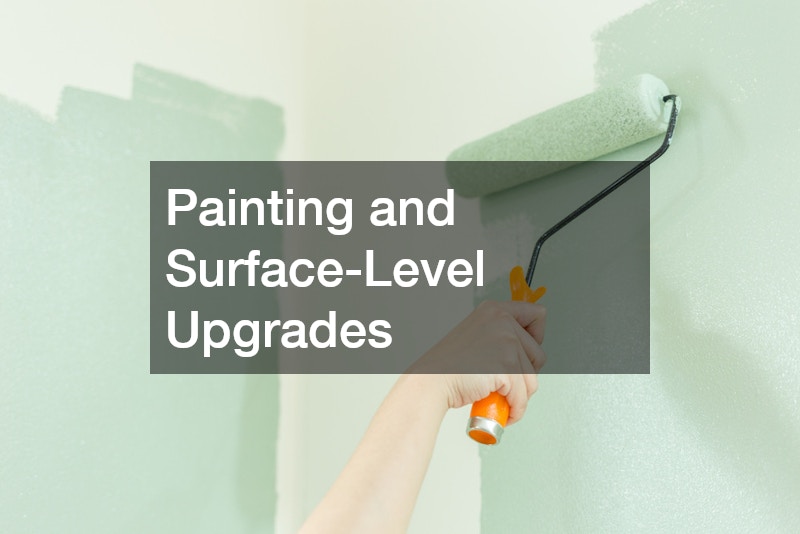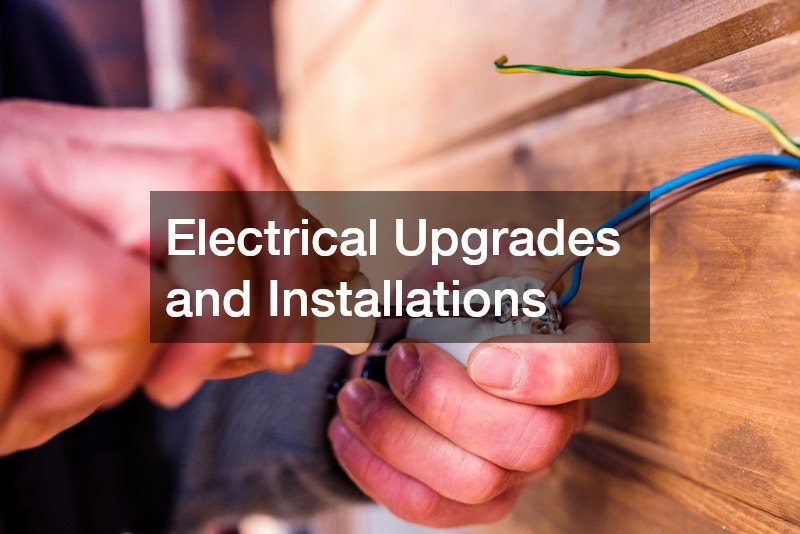Home improvement has become more accessible than ever. With endless how-to videos, tool rental options, and step-by-step guides online, many homeowners are embracing the satisfaction of do-it-yourself projects. Tackling home improvements without professional help can save money, add personal flair, and empower property owners to take control of their spaces. However, it’s essential to understand that not every project is suitable for a DIY approach. Some indoor and outdoor home improvement ideas carry greater risks, require advanced skills, or even mandate professional certification to complete safely and effectively.
This blog offers a comprehensive guide to help you decide which home projects you can confidently attempt on your own and which ones are best left to the pros. By evaluating different types of projects—from cosmetic touch-ups to full-scale renovations—you can protect your investment, avoid common mistakes, and ensure your home remains safe and functional. Whether you’re refreshing a bathroom or revamping your backyard, this breakdown will serve as your roadmap to smarter, safer home upgrades.
Painting and Surface-Level Upgrades
Painting is one of the most DIY-friendly projects you can undertake. Whether you’re refreshing a bedroom, updating kitchen cabinets, or adding an accent wall, painting allows you to express your style while staying within budget. Surface-level improvements like installing new switch plates, replacing old faucets, or putting up peel-and-stick wallpaper are generally safe and achievable for beginners.
These projects can usually be done in a weekend, require minimal investment in tools, and don’t interfere with your home’s structural systems. However, even these seemingly simple tasks benefit from preparation. Skipping steps like sanding, cleaning, or priming can result in an unprofessional finish. Using low-quality materials might also mean you’ll need to redo the project sooner than expected.
Despite their simplicity, these upgrades deliver an impressive return. A fresh coat of paint or stylish fixture replacement can significantly elevate a room’s aesthetic and boost perceived home value—making them some of the easiest and most impactful indoor and outdoor home improvement ideas to do yourself.
Basic Landscaping Projects
Landscaping is another area where homeowners can confidently flex their DIY muscles. Mowing the lawn, planting flowers, trimming hedges, and installing simple hardscaping elements like stepping stones or solar lights are excellent beginner projects. These enhancements can dramatically improve curb appeal without the need for specialized tools or permits.
However, larger landscaping jobs—like building a retaining wall, installing irrigation systems, or creating terraced gardens—are better suited for professionals. These projects often involve complex planning, drainage considerations, and knowledge of soil types or local zoning codes. Mistakes can lead to water pooling, soil erosion, or permanent plant damage.
To maximize success with DIY landscaping, start small. Focus on projects that deliver visual improvements without extensive technical requirements. Outdoor lighting upgrades, flower beds, or even container gardens are all examples of low-risk, high-reward tasks that elevate your home’s appearance and can be completed with minimal assistance.
Building or Replacing a Deck or Patio
A deck or patio can transform your backyard into a functional and inviting living space. While staining or sealing an existing deck is an appropriate DIY project, constructing a new one from scratch requires structural knowledge and compliance with building codes. You’ll need to understand weight-bearing supports, drainage, and foundational elements to ensure safety and durability.
DIY deck kits exist and can be helpful, but they still demand precise measurements, level installation, and attention to material specifications. Incorrect construction can result in sagging boards, rotting posts, or worse—injuries. In many regions, decks must be inspected and permitted by local authorities, which adds another layer of complexity.
For simple patio installations using pavers or concrete slabs, confident DIYers may be able to handle the job. However, anything that involves electrical work, gas lines (for outdoor kitchens or fire pits), or significant excavation should be handled by professionals. These outdoor home improvement ideas can increase your home’s resale value, but only when built safely and to code.
Installing New Flooring
Swapping out carpet or installing floating laminate flooring is within the reach of many homeowners. DIY flooring kits and tools have become increasingly user-friendly, and many tutorials guide you through each step of the process. These types of flooring projects are ideal for bedrooms, home offices, or low-moisture areas where precision isn’t as critical.
However, installing tile, hardwood, or stone flooring requires more skill. Laying tiles evenly, cutting material accurately, and applying grout without making a mess can be difficult without experience. Mistakes in these areas can result in uneven surfaces, water intrusion, and even cracked tiles down the line.
Professional installation becomes even more important in areas with plumbing—like kitchens, bathrooms, or laundry rooms. Moisture resistance and leveling are critical in these spaces. Additionally, if your subfloor is uneven or damaged, a professional will know how to repair it before installing the new floor.
Roofing Repairs and Replacement
Few home improvement tasks are as risky and technically challenging as roofing. Although it might be tempting to climb up and replace a few shingles after a storm, roofing projects are best left to professionals. Roofing services involve working at dangerous heights and require knowledge of proper ventilation, flashing, and underlayment techniques.
Attempting to replace or repair a shingle roof yourself might seem like a cost-saver, but it can lead to serious issues. Improper installation can result in leaks, poor insulation, and even structural damage. In many cases, warranties on roofing materials are voided unless installed by a certified contractor.
Whether you’re addressing roof repairs after a storm or planning a full roof replacement, trust a professional roofer or local roofing contractor to ensure the job is done right. Besides safety, professionals can spot signs of deeper damage, mold, or compromised trusses that a DIYer might overlook. These outdoor home improvement ideas keep your roof safe.
Plumbing Work and Drainage Solutions
Some plumbing projects are DIY-friendly. Replacing a faucet, unclogging a sink, or installing a new showerhead are relatively simple tasks with minimal risk. However, anything that involves altering water lines, installing new plumbing fixtures, or accessing your sewer system should be reserved for licensed plumbers.
The biggest danger of DIY plumbing is water damage. A small leak under a sink can lead to mold, rot, and thousands of dollars in repairs if unnoticed. More complex projects, like rerouting pipes or installing appliances that require drainage, can become dangerous if done incorrectly.
Drainage issues, in particular, often require professional diagnosis. If water is backing up into your home or draining slowly from multiple fixtures, it’s likely a job for drain cleaning contractors. They have the equipment to identify and remove blockages without damaging your plumbing system.
Electrical Upgrades and Installations
Like plumbing, electrical work is often best left to professionals. While changing out a light bulb or installing a new outlet cover is safe for DIY, most electrical upgrades come with real danger. Wiring a ceiling fan, installing recessed lighting, or replacing an electrical panel should not be attempted without proper training.
Incorrect electrical work can result in fires, electric shock, or damage to your home’s circuitry. Additionally, many local building codes require electrical projects to be completed or inspected by licensed electricians. Doing it yourself could violate codes, complicate future real estate sales, or void your homeowner’s insurance policy.
Hiring an electrician ensures that everything is done safely and to code. They’ll also be able to offer advice on energy-efficient lighting, GFCI outlet installations in wet areas, and home automation upgrades—making your home both safer and more modern.
Garage Door Repairs and Installation
Garage door replacement is another project where professional expertise is essential. While painting or replacing weatherstripping is safe for DIYers, installing a new door is a job that requires mechanical knowledge and strength. Garage doors are heavy, and the springs used to lift them are under extreme tension.
Improper installation can lead to a malfunctioning system or a door that crashes down unexpectedly, posing a serious safety risk. Even adjustments to automatic openers or track alignment should be done with caution.
Hiring a licensed technician ensures that your garage door is properly balanced, secured, and fitted with safety features. This investment protects your family and adds both functionality and curb appeal to your home.
Managing Pests and Outdoor Health Risks
Pests are a common concern for homeowners, and it’s easy to be tempted by over-the-counter solutions. While setting a few traps or applying bug spray might seem effective, more serious infestations call for professional intervention. Pest control companies have access to commercial-grade products and the training to identify entry points and long-term solutions.
When it comes to outdoor health risks, services like mosquito control service providers can help you reduce the population of disease-carrying insects. DIY methods like citronella candles or garden sprays offer limited, short-term protection and rarely treat the root cause.
Insects, rodents, and other pests can damage wiring, contaminate food, and cause structural damage. Rather than risking your family’s health and comfort, it’s smart to hire a professional for long-lasting results. This is especially true for outdoor home improvement ideas like new landscaping or decks, which can become nesting grounds without proper pest control measures.
Demolition and Structural Modifications
Demolition might seem simple—just swing a hammer and watch the drywall fall—but there’s much more involved than meets the eye. If you’re removing walls or altering your home’s layout, you must first identify load-bearing structures, utility lines, and potential asbestos or lead materials.
Hiring a demolition company ensures that work is done safely and efficiently, making them a valuable resource for outdoor home improvement ideas. Professionals will also handle permits, waste removal, and recycling of materials when applicable. They can tear down parts of your home without compromising its structural integrity or risking injury.
Attempting major demolition without proper tools and training is dangerous and could result in expensive repairs. Even small mistakes—like damaging a water or gas line—can have serious consequences.
Waste Removal and Cleanup
Home improvement projects often generate significant amounts of waste—broken tiles, drywall, old insulation, or discarded furniture. While you can haul some of this to the dump yourself, larger projects require a more practical solution. Residential dumpster rentals allow you to dispose of materials easily without cluttering your property.
These services drop off and pick up containers sized for various project scopes, saving you time and protecting your vehicle from damage. They’re especially useful for outdoor home improvement ideas involving yard cleanup, roofing, or demolition.
DIYers often overlook waste removal when planning projects, leading to last-minute stress or delays. Partnering with a dumpster service from the start makes your entire renovation process smoother and more efficient.
Seasonal Maintenance and Roof Care
Seasonal maintenance, like cleaning gutters or inspecting for drafts, is a great way to extend the life of your home and is one of the top outdoor home improvement ideas. Many homeowners can handle these tasks on their own with the right tools and ladder safety knowledge. However, roofing tasks are generally better left to the experts.
Even if you’re just replacing a few shingles or patching a small area, roof repairs demand precision. A poorly installed patch can invite leaks, pests, or mold. Professionals know how to match materials, assess structural damage, and safely navigate steep surfaces.
Hiring a roofing contractor or using a trusted roof replacement company ensures peace of mind. You won’t just get better workmanship—you’ll also receive warranties and long-term support for your investment.
DIY projects offer homeowners an excellent way to improve their living spaces while saving money and learning valuable skills. From painting walls and upgrading fixtures to planting a garden or building outdoor furniture, there are plenty of safe and satisfying indoor and outdoor home improvement ideas you can tackle on your own.
That said, not every project is suitable for a DIY approach. Roof repairs, electrical upgrades, plumbing modifications, and structural changes carry significant risks if done incorrectly. Partnering with experts—whether it’s drain cleaning contractors, pest control companies, or a demolition company—ensures your work is safe, effective, and adds real value to your property.
Whether you’re considering garage door replacement, mosquito control service, or hiring a roofing services team to evaluate your shingle roof, choosing the right projects to DIY makes all the difference. Investing in your home means investing in its safety, function, and future. Take pride in the work you do—but don’t hesitate to bring in the professionals when the job calls for it. Reach out to local professionals if you have outdoor home improvement ideas.






